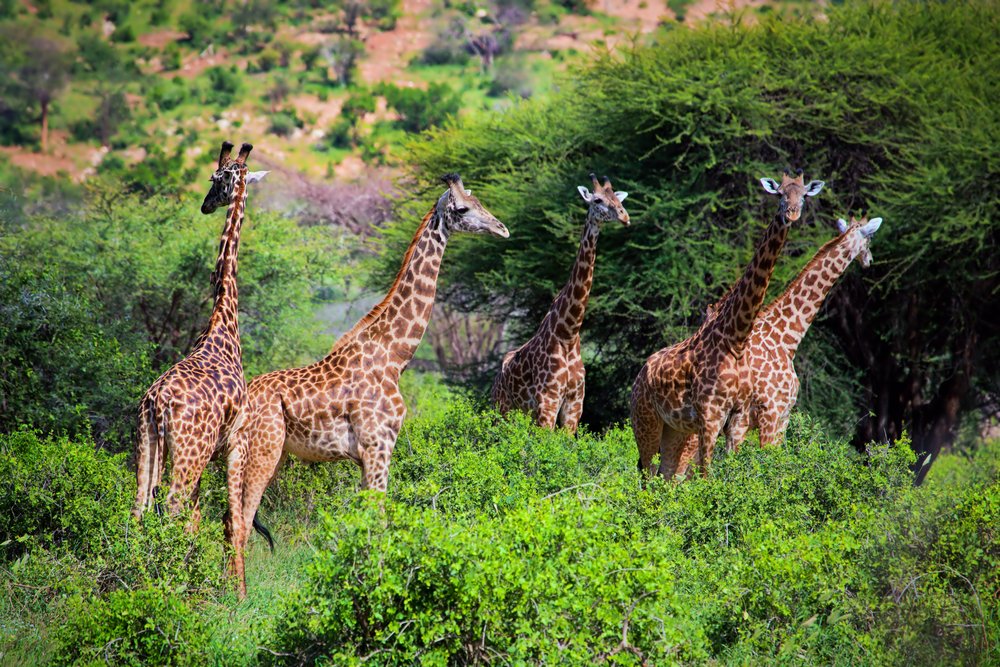Tsavo West National Park
Land of Lava, Springs, Man-Eaters & Magical Sunsets

With 20,700 square kilometers, this park, divided by the Mombasa-Nairobi highway into two blocks – East and West, is one of the world’s largest wildlife sanctuaries. While considerable portions of the park have been opened and developed for tourism, a great tract to the north is still inaccessible and closed to ordinary tourist traffic. Tsavo is an interesting mixture of extensive plains, steep rocky hills rising abruptly, a few river valleys with their fringes of tall green acacia and palm trees. Altitudes range from 300 meters in the Eastern section to 1,800 meters in the highest peaks of the Ngulia Hills.
The Mzima springs is an interesting feature in Tsavo west. It’s crystal clear fresh waters are a sanctuary to crocodiles, hippo and fish. There is an underground glass observatory where visitors get upclose to the hippos with out the dangers of an encounter.


Over 20,000 of these giants roam the area, which also happens to be a black rhino stronghold. The park is famous for its lions, descendants of the dreaded Man eaters during the construction of the Mombasa-Kampala railway at the end of the last century.
There is network of over 800kms of game viewing roads. Bird life is legion in the park and new species are often discovered. Sunbirds, hornbills, parrot, weavers, starlings, bustards and birds of prey are present in great numbers among the many species.
It is fed by numerous rivers, some underground, which flow out of the lava from different directions, forming an oasis in the middle of this otherwise dry scrubby landscape. Practically most of Kenya’s wildlife is represented in the two blocks of Tsavo, but the dominant one is elephant.